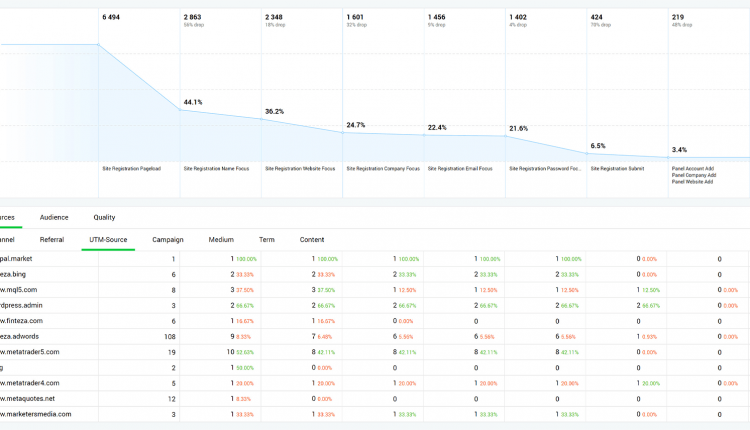The major aim of content marketing is to acquire traffic. As per eMarketer, around 60% of marketers create at least one piece of content each day. Interestingly, 62% of companies still don’t know how to measure the ROI of content marketing campaigns.
Content marketing ROI can be measured by subtracting the money generated via leads from the money spent on content writing and distribution and then dividing the result again by the amount of money spent. The end result should be multiplied by 100 to identify the exact ROI.
The biggest factor that impact the content marketing ROI is quality traffic. Hence, it is important for content marketers to measure the quality of traffic acquired from their content marketing efforts so that they are able to distinguish between poor quality traffic from healthy traffic.
Although you can manually identify the quality of traffic by looking at the data provided by Google Analytics but you might have a hard time doing so.
An easier way to identify traffic quality on your website is by using a tool called Finteza. This tool displays the share of real users by means of a visual report as displayed in the below screenshot:

Green color displays real traffic, yellow color shows visitors who use HTTP proxies, VPNs or TOR networks and Red color is used to represent traffic coming from bots, spoofers etc.
For a website receiving quality traffic, the share of yellow and red traffic should not be high. You need to identify the channels that are passing the maximum of yellow and red traffic. If these are the channels supported by content marketing then you need to take further action to reduce the amount of low quality traffic acquired using these channels.
The following are the top channels where your content marketing efforts are focused:
Organic search is the most important medium of content marketing. You prepare content and post in on your site in the form of product pages, blog pages or general webpages. Further, you optimize these pages via SEO. This helps them to rank under organic search results and pass traffic to your website.
In order to ensure that the visits acquired via organic search are real and action oriented, you need to understand the user intent and your business scope.
Let your SEO team know that a specific content is prepared for specific audiences only. Creating content on evergreen topics can make a big difference to your content strategy.
Besides, content should be prepared keeping in mind the user intent. If the intent goes wrong or you provide wrong information in your content then visitors will bounce back from your site. Your website should not rank for the wrong keywords.
Social media plays a vital role in bringing traffic to your site via content marketing. Identify the channels that are sending the maximum traffic but have the lowest conversions.
Conduct a deeper analysis of the type of content posted on those channels. If you are promoting offers that provides 50% flat discount to the users and once they land on the site, they find that the discount period is over then they are sure to bounce back from your site.
It is important to continuously monitor your social media posts as well as campaigns and remove or replace the posts that are no longer active.
Sending irrelevant emails to your customers always results in a spike of traffic with no real conversions. Hence, it is essential to always send personalized, segmented and relevant emails to each and every customer.
Considering the past user behavior is a great way to enhance the overall effectiveness of email marketing campaigns. For example sending reminder emails containing special discount coupons to customers who have added some items in their shopping cart but have not purchased them yet is an impressive way to drive both traffic and conversions to your website. Email content must contain words like ‘You’ and must represent the customers by their name.
The content on the landing pages must match the ad content for maximum conversions. For example, if the ad compels the customers for a purchase in order to earn 100% cashback and the landing page does not displayed any such offers then the customers will get confused and leave the site.
This can result in a temporary traffic spike leading to impressions but no conversions. Money will be lost via PPC ad spending and content copywriting without leading to sales.
Several times, businesses have a seperate marketing budget for sponsored content where an article is published on a popular niche website that links back to the advertisers website or explains the products or services that the advertiser offers.
Again, promoting irrelevant sponsored posts on sites that are not niche related can result in a traffic spike with no real value.
For example, publishing a sponsored post related to latest blockchain technology on a cooking website might not go well with the cooking community.
Content marketing is an impressive way to reach audiences but only if it is done correctly. Always measure the quality of traffic by comparing the number of conversions your website is getting from different channels. It is always better to cut spend on channels that are leading to zero conversions or comparatively lesser conversions. Content marketing is both an art and science. You can’t ignore any one of the key aspects and become successful. Consider the points discussed in this article and implement them in your content marketing strategy.